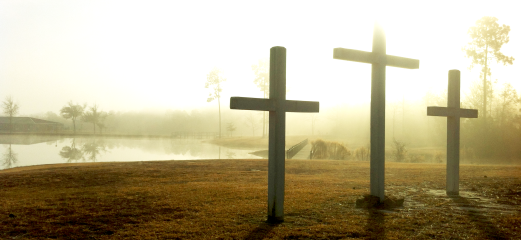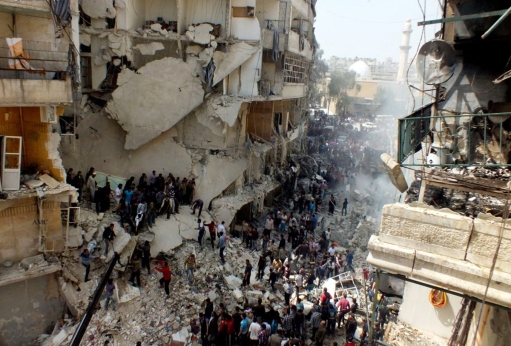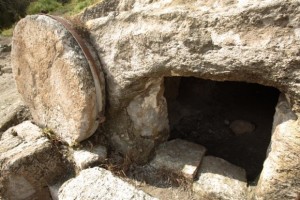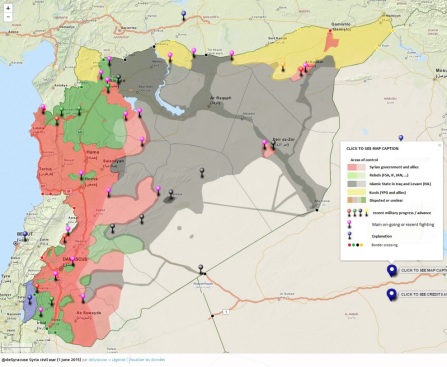Dear Grit readers,
What you may not h ave known about the Grit is that it began and always continued as a discussion between myself and a cherished conversation partner. Though the posts were not written as dialogues, they were the result of an ongoing conversation which we held over the years. At the Grit I tried to share with you the fruits of that discussion, a dialogue in which I learned so much. That was the raison d’etre of the Grit.
ave known about the Grit is that it began and always continued as a discussion between myself and a cherished conversation partner. Though the posts were not written as dialogues, they were the result of an ongoing conversation which we held over the years. At the Grit I tried to share with you the fruits of that discussion, a dialogue in which I learned so much. That was the raison d’etre of the Grit.
That conversation has now finished.
As a result, I’m afraid there’s no more material to post here.
I might occasionally upload something, and I’ll leave the site available for visitors. But it’s no longer an active blogsite.
Thankyou so much for taking part in the discussion over the past five years. Around 50 000 people have visited, many, I think, Christian believers. Perhaps some of you might continue the conversation elsewhere. If nothing else, I hope the Grit has encouraged you to rethink what you’ve been taught, and to Question Everything. 🙂
 Bill was a Christian man, I don’t think he’d be that fussed about dying.
Bill was a Christian man, I don’t think he’d be that fussed about dying.
What would have really upset Bill is the outpouring of Platonic theology that his death has triggered.
Listen to a few examples:
“A great saint has entered glory” – Archbishop Glenn Davies, Sydney Anglicans Website
“Moore Veteran called home” – Sydney Anglicans headline
“Dr Bill Dumbrell was called home into the presence of the Lord” – Moore College Website, Mark Fairful
“Bill now enjoys the presence of the Lord he served throughout his life.” Mark Thompson
“The great Bill Dumbrell has gone to Abraham’s side” – John Dickson, fb
Bill would be turning in his grave. That’s because he spent his entire career trying to teach people a different story about the Christian faith.
Not the ‘dying and going to heaven’ story, where eschatology is individualised, escapist, and death-centred. Not the story where our real home is elsewhere, and we get to go there as a spirit creature when we are finally released from the shackles of our human flesh. Not the story where the moment of death is the moment of achieving glory in the presence of the Lord forever, in heaven.
Bill devoted his public life to proclaiming a gospel different from this greek cosmology. More than any other figure from the Sydney Diocese, Bill insisted on an eschatology that was corporate, creation-focussed, and resurrection-centred. In the story Bill told, the presence of the Lord was something we would only enjoy when Christ returns. That would be the moment of glorification for believers. For Bill, our only home is planet earth, and its renewal is our only hope. Read his published works and search for any hint of the other story, the one quoted above – you won’t find it.
What you’ll find again and again is an eschatology that arises from Bill’s understanding of biblical theology, rather than from c.19th children’s hymns. He always had his eye on the big storyline, and when he thought about goals, it was the goal of that story that interested him.
Consider these quotes from Bill:
… In the epistle to the Hebrews… we refer here to the striking way in which the epistle takes up the biblically pervasive notion of “rest” as the goal towards which the faith of believers… is directed. This dependence upon the total harmony projected for the entire creation, as bound up with the notion of rest developed from Genesis 2, cannot be missed. Such references point to the establishment of the rule of the kingdom of God over an ordered creation… The End of the Beginning, p.192
Through reaffirmation of the believers hope in heaven, 1 Peter encourages resistance to the persecutions experienced by scattered congregations… The prospect for those who persevere will be the crown of glory at the manifestation of Christ. The Search for Order, p.317
We still search for the city whose maker and builder is God. The primary eschatological event, the death of Christ, has placed us in the last days, which will be brought to a close by the return of Christ. At that time the cosmos will be changed, Christ will reign over his enemies, and believers will enter into their promised inheritance. The Search for Order, p.326
At the end of the canon, we have returned to the beginning with an overplus… Through the sacrifice of the Lamb believers will rule, taking on the role that Adam had forfeited… For they have seen the face of the Lamb, the image into which they have been transformed, and they will be eternally in his presence. The history of salvation has ended. The Search for Order p.346
We could go on, he said the same thing over and over. This biblical eschatology preoccupied Bill throughout his writings.
As for the other story of dying and going home to glory, Bill literally had no time for it. Never mentions it.
How sad, then to see his former colleagues foisting this other story onto him, fresh off the pages of Plato, after he is dead and can’t complain!
It’s a kind of betrayal, in effect covering over his life’s work as though it never happened. To speak of him like this is to silence the challenge of his scholarly voice. It is to say, we learned nothing from you, Bill.
These are the same colleagues who professionally ostracised Bill for so many years. When was the last time Moore College invited this ‘dear brother’ to speak at one of its meetings?
That’s fair enough if you don’t like his views. But to speak as though he didn’t hold them shows a lack of respect.
Contrast the acknowledgement outside Sydney, from another Aussie scholar, Mike Bird:
“Vale Bill Dumbrell. May he rest in peace and rise in glory.”
That’s at least a prayer Bill could recognise and relate to.
As for his Sydney colleagues, they’ve sent him off to some other-worldly paradise where I imagine he would not feel in the least ‘at home’. He certainly never looked forward to it while he was alive.
That’s why I say poor bloody Bill Dumbrell.
Well, that’s our take on the atonement. Others will have to assess its value.
However, in the first post of the series we outlined six criteria we believed a successful theory of the atonement needed to meet. The least we can do is to assess our account in terms of these criteria:
1. It needs to make sense in the context of Jesus’ life and ministry – our account finds a great deal of continuity between Jesus’ life and his atoning work on the Cross. The Cross is not something different tacked on the end of a teaching ministry. Rather it is the climax of his ministry, the culmination his teaching and healings were pointing to.
2. It needs to make sense in the context of the Bible’s metanarrative, its big story – our view makes Jesus’ atoning work the answer to the big questions left hanging in the Old Testament, the denoument of Israel’s story and fulfilment of their prophetic hope. His death finally cleanses his people’s sin, and his resurrection brings them back from exile to God.
3. It needs to comprise both Jesus’ death and resurrection as integral to his achievement, such that it would be inadequate and incomplete if either were missing. Popular views of the atonement find little saving significance in the resurrection. Our account, while holding both events necessary, actually places the greater part of the weight on the resurrection.
4. It must be an account that gives full and equal role to Father, Son and Spirit. By rehabilitating the resurrection to central stage, our approach makes the Holy Spirit a key player in the atonement. For it is He who raises Jesus, and the realm he is raised into is the new realm of the Spirit. It is likewise the Spirit who raises up God’s people in Christ.
5. It must be an account that give clues to the subsequent rise and shape of the community of Jesus as described in Acts and elsewhere. Resurrection body –> resurrection community. Simple.
6. It must leave some room for mystery in this central mystery of our Faith. Our account of the atonement is very brief. It doesn’t claim to know too much detail. It is light on mechanism, being content to assert connections rather than explain them. It is not mathematical and doesn’t invite a ‘book-keeping’ approach to salvation (as some theories do). Rather it relies heavily on what Calvin called ‘the mystical union’ – which for us is the union between Christ and the rest of the human race in a general way, and between Christ and his people in particular.
CONCLUSION
Whatever you think of our ‘better theory’, it does seem to live up to the criteria we established before we started. If there are other accounts of the atonement out there that do as much, we’d like to know about them.
A better theory of the atonement – 5: Resurrection (concluded)
Posted: October 14, 2015 by J in Bible, TheologyTags: atonement, eschatology, resurrection, satisfaction theory
So many of our gospel presentations today are content to end the story with Jesus’ death, then switch their focus to our repsonse. But it is notable that none of the four apostolic gospel presentations is willing stop there. They all press on to reach their climax and denoument at the resurrection.
Jesus, having announced his intention to live out Israel’s prophetic hope of resurrection, then goes and does it. He allows himself to be cast out and killed. He bears Israel’s exile in crucifixion, and then undergoes their resurrection. The tomb is found empty, and his disciples begin to speak of ‘what we have heard, what we have seen with our eyes, what we have looked at and touched with our hands’ (1 John 1).
In the context of Jesus’ ministry the meaning of his rising is clear: he has entered into the new age, and done it on Israel’s behalf. ‘We have seen it … and declare to you that the age-to-come life that was with the Father…has now been revealed to us’ (1 John 1). Now all his people can enter the new age also, restored to God and to their inheritance as his people.
In other words, Jesus’ resurrection was this sort of resurrection: an eschatological event of epoch-making proportions. And the salvation it achieved was this sort of salvation. At his death Jesus closed off the path of sin that humanity had been travelling since Adam (see Post 3). Now at his rising he achieves a way forward for mankind, a future: “In Christ shall all be made alive.”
THE APOSTOLIC WITNESS
In the earliest apostolic preaching, it was the resurrection which established Jesus as redeemer and judge of Israel:
“God has exalted him to his right hand as Leader and Saviour that he might give repentance to Israel and release from sins.” Acts 5:31
The Jewish title for this saviour/leader was Messiah. Israel expected this Messiah would be a new David-figure, the king sent by God to bring the nation back from exile. Peter, after describing how Jesus was murdered, announces to the crowd at Pentecost that God has appointed Jesus to this kingly office.
“David spoke of the resurrection of the Messiah, saying, ‘He was not abandoned to Hades…’. Therefore let the entire house of Israel know with certainty that God has made him both Lord and Messiah, this Jesus whom you crucified.” Acts 2:31, 36
What Peter is announcing, of course, is Jesus’ resurrection. In his view this was quite simply Messiah’s coronation – an enthronement which secures blessing for his people. For now Messiah is ushering in the age of the Spirit, bringing Israel release from their old captivity and return to live in God’s presence in the new kingdom:
“Be baptised every one of you in the name of Jesus Christ for release from your sins; and you will receive the gift of the Holy Spirit.” Acts 2:38
Paul shares this view of resurrection-as-enthronement: at the opening of his master-epistle, to the Romans, he uses another traditional title for the Davidic king: son of God.
…the gospel concerning his Son, who was descended from David according to the flesh and was appointed to be son of God with power according to the Holy Spirit by resurrection from the dead, Jesus Christ our Lord, through who we have received grace. Romans 1:3-5
He rose to reign in the Spirit-filled new life of God’s kingdom. But because he does this as Israel’s leader, he opens up that new existence for the whole nation.
In other words, Jesus’ resurrection is being shared with his people. They become a resurrection community enjoying the blessings of the new age, here and now. Or, to use Isaianic terms, enjoying salvation:
By his great mercy he has given us a new birth into a living hope through the resurrection of Jesus Christ from the dead… Although you have not seen him, you love him… you believe in him and rejoice with an indescribable and glorious joy, for you are already receiving the goal of your faith: salvation for human people. 1 Peter 1:3-9
THE CHURCHES
The NT epistles are written with the express purpose of helping this new community grasp and live out its resurrection life to the full together.
But God, who is abundant in mercy…made us alive with the Messiah even though we were dead in trespasses. …He also raised us up with him and seated us with him in the heavens in Christ Jesus… For we are His workmanship, created in Christ Jesus for good works, which God prepared ahead of time so that we should walk in them…So I urge you to live a life worthy of the calling you have received. Be completely humble and gentle… Ephesians 2, 4.
Of course the key-word here is ‘so’: their community life springs out of the reality of resurrection. All Paul’s ethical instruction is given on this same basis: the people are already part of this resurrection community. Indeed it only makes sense with that as its premise:
No longer present your members to sin as instruments of wickedness, but present yourselves to God as those who have been brought from death to life, and present your members to God as instruments of righteousness. Romans 6:13
The body is meant not for fornication but for the Lord, and the Lord for the body. And God raised the Lord and will also raise us by his power. Do you not know that your bodies are members of Christ? Should I therefore take the members of Christ and make them members of a prostitute? Never! 1 Corinthians 6:13-15.
He died for all, so that those who live might live no longer to themselves, but to him who died and was raised for them… So if anyone is in Christ, new creation! – the old has passed away; see, new things! 2 Corinthians 5:14-17
This view of the Christian communities is not unique to Paul but common to all the apostolic writers. Their letters are written to encourage and admonish resurrection-gatherings:
Through Jesus you have come to trust in God, who raised him from the dead and gave him glory, so that your faith and hope are set on God. Now you have purified yourselves by obedience to this truth that leads to genuine brotherly love. So love one another deeply from the heart. For you have been born anew, not of perishable but of imperishable seed, through the living and enduring Word of God. 1 Peter 1:22
We know that we have passed from death to life because we love one another. Whoever does not love remains in death. 1 John 3:14
The letters to the churches hardly ever mention Jesus’ resurrection without linking it to the present life-experience of the recipients. The two things – his resurrection life and theirs – are not treated as two but as one and the same thing.
In summary, Jesus’ expectation had been realised: in his resurrection as Messiah, he had raised up Spirit-filled communities which began living the new life of the age to come, even in the present. Those far away had released from sin and brought near, to enjoy favour with God and peace with each other. Isaiah’s ‘salvation’, Ezekiel’s ‘resurrection from the dead’, or Jesus’ ‘kingdom of God’ (see Post 4) – whichever name you want to call it by, it had arrived.
CONCLUSION: A Better Theory of the Atonement
We have suggested that Jesus achieved two things at the Cross: a death and a resurrection. Both of which we needed. Satisfaction Theory finds little atoning value in the resurrection: how can rising from the dead satisfy anything? But now that we have told the story the apostles were always telling, it should be apparent why they place the greater share of the theological weight on the resurrection. It was essential that our sinful human flesh be put to death, and Jesus accomplished that. But this was really just the ground-clearing. The real goal was the building which God had planned in its place: the kingdom of God.
The death of Christ was God’s ‘No’ to sin and sinful mankind. But that was not his final word. God’s ultimate word to us was given in the resurrection: and it was ‘Yes’. This is why all four gospels push on beyond Good Friday, to land on Easter Sunday.
In Jesus’ death and rising from the dead, a second thing is accomplished for mankind: a resurrection.
…that Christ died for our sins in accordance with the scriptures, and that he was buried, and that he was raised on the third day in accordance with the scriptures. 1 Corinthians 15.
The two achievements are not symmetrical. When Paul rehearses for the Corinthians the teachings he first delivered to them, the things of first importance, he gives the death of Christ fifteen words while the resurrection gets the other 1200. And the theology of atonement in that chapter is entirely built on the resurrection.
True, we share in both Jesus’ death and resurrection, and both are needed for our salvation. Yet the two events are not given equal weight or importance in the story the NT tells. In the apostles’ thought the emphasis is massively on resurrection not death. To this event, not the crucifixion, they were called to bear witness (Acts 1:22; 4:33).
This unequal emphasis can be explained as the result of taking a salvation-historical view of things. Paul is viewing the Cross as part of the Bible’s meta-story. In capturing that story, he has panned his lens out to the point where only two great events remain visible:
Since through a man came death, through a man also came the resurrection of the dead. For as in Adam all die, so in Christ all will be made alive. 1 Corinthians 15:21-22
Jesus’ achievements at the Cross, then, reflect the basic structure of salvation-history: death-resurrection. And from that perspective, death is nothing new. Nothing to write home about, you might say. It has been with us all along, ever since Adam: the plague of our existence. Historically speaking, death is Adam’s legacy, not Christ’s: “In Adam all die.”
The new thing Jesus accomplishes is resurrection. When he rose, Israel’s history – and indeed world history – turned on its hinge. “In Christ shall all be made alive.”
In salvation-historical terms, then, Adam correlates with death – and Christ with resurrection. Likewise while both Jesus’ death and resurrection are part of God’s plan, yet his death is often identified as the work of man, while his resurrection is uniquely ascribed to God’s action:
And you killed the prince of life, whom God raised from the dead. Acts 3:15
The God of our ancestors raised up Jesus, whom you had killed by hanging him on a tree. Acts 5:30
In the structure of NT thought, then, God’s victory at the Cross is largely centred on the resurrection.
“In accordance with the Scriptures.” Paul is careful to repeat this phrase: it applies not only Jesus’ death, but also to his resurrection. Israel had been waiting and hoping for a new age to be born, a time when all the nations’ enemies would be overthrown. They themselves would be restored from exile and enter once again into their covenant inheritance: they would enjoy Yahweh’s favour in their own land. In the new age, all God’s purposes for his creation would arrive. Isaiah’s special word for this age was ‘salvation’ (Gr. soterian). Jesus prefered to call it ‘the kingdom of God.’ Prophets like Ezekiel and Daniel had a different image to depict the new age: it would be resurrection from the dead (Ezekiel 37, Daniel 12). The nation was effectively dead, but God would bring it back to life. This is resurrection ‘according to the Scriptures’.
Jesus’ ministry was full of this prophetic imagery of resurrection.
JESUS’ TEACHING
In the great, central parable of Luke’s gospel, salvation is twice described as resurrection from the dead: “This son of mine was dead and is alive again!” (Luke 15:24,32).
In John’s gospel, Jesus’ talk about his Messianic role constantly centres around resurrection. The nation needed a way to reconnect with God: the Jerusalem temple was supposed to be that place, but when Jesus visits he finds it corrupted. In his very first public encounter, Jesus introduces himself as one who will raise up a new temple for the nation:
Jesus answered them, “Destroy this temple, and in three days I will raise it up.” The Jews then said, “This temple has been under construction for forty-six years, and will you raise it up in three days?” But he was speaking of the temple of his body. After he was raised from the dead, his disciples remembered that he had said this. John 2:19-22
Jesus identifies himself as ‘the resurrection and the life’. This defines his messianic identity in a way ‘the crucifixion and the death’ does not. In nearly every chapter of John’s gospel, Jesus asserts that his mission is to bring in the life of the age to come:
Just as the Father raises the dead and gives them life, in the same way also the Son gives life. John 5:21
That means leading the people out from the condemnation of exile, and into resurrection life:
Anyone who hears my word and believes him who sent me has age-to-come (Gr. aionios) life, and does not come under condemnation, but has passed from death to life. John 5:24
So his Messianic role can be summed up in these exact terms:
This is indeed the will of my Father, that all who see the Son and believe in him may have age-to-come life; and I will raise them up on the last day.” John 6:40
JESUS’ HEALING MINISTRY
The great climactic healing in John’s gospel is a resurrection: that of Lazarus. This event caused ripples throughout Judea (John 12:9,17). Raising from the dead was a prominent feature of Jesus’ healing ministry. Moreover, he was explicit about the symbolic value of these raisings: they were the evidence that his was the kingdom-ushering, Messianic ministry foretold by the prophets:
When John heard…what Messiah was doing, he sent word…“Are you the one who is to come, or are we to wait for another?” Jesus answered, “Go and tell John what you hear and see:…the dead are raised, and the poor have good news brought to them.” Matthew 11:4-5
AT JERUSALEM
Once Jesus arrives at the Passover festival in Jerusalem, the narrative echoes with constant references to resurrection (Matthew has at least 12 before the actual resurrection event). Jesus tells parables about the resurrection of the dead (Matthew 25:32ff), insists on the reality of resurrection in the face of contradiction from the Sadducees (Matthew 22:23), quotes prophecies of resurrection (Matthew 22:44), encourages his disciples to expect it (Matthew 23:11), and predicts that he himself will undergo resurrection (Matthew 26:32). Also his death sparks off a mini-general-resurrection moment in Jerusalem (Matthew 27:52). After his death the chief priests stress about Jesus’ prediction of his own resurrection and make plans to prevent it (27:63).
Clearly Israel’s hope of resurrection is absolutely central to Jesus’ understanding of his own role in the nation and in salvation-history, and central to what he expects to achieve in Jerusalem at the Passover.
Perhaps most striking of all here is the gradual, unfolding sense that Jesus is appropriating Israel’s salvation-hope to himself. The nation was waiting for return from exile, for the ‘resurrection from the dead’ the prophets had promised. But now Jesus takes that expectation on his own shoulders: he will be the one raised. It seems that he is planning to play Israel’s part at this climactic moment in her history. He will fulfil the role of Isaiah’s Servant not only in death and exile (see Post 3) but also in the return, the resurrection. He will bring the nation into the new age which is her birthright, but which she could never enter otherwise. He will do it in his own body.
 We want to suggest a better way to understand what the Cross achieved in relation to our human sinful condition. It achieved two things: first a death, and second a resurrection.
We want to suggest a better way to understand what the Cross achieved in relation to our human sinful condition. It achieved two things: first a death, and second a resurrection.
1. A DEATH
If there is one thing the apostles clearly taught about Jesus’ death, it was that he did not die as a mere private individual, but rather for the sins of mankind. He died as a representative. While we evangelicals like to emphasise that our death was transferred to Jesus, the NT writers usually tell the story the other way round: we get to share in his death. His death implicates and involves us all.
We are convinced that one has died for all; therefore all have died. 2 Corinthians 5:14
We have been buried with him by baptism into death. Romans 6:4
This one representative, who was made like us in every way, has taken sinful humanity (‘flesh’) upon himself. And then he, as the representative bit of our ‘flesh’, has taken it down to the grave .
For God has done what the law, weakened by the flesh, could not do: by sending his own Son in sinful flesh like ours, and as a sin offering, he condemned sin in the flesh. Romans 8:3
He was put to death in the flesh. 1 Peter 3:18
The wrath of God against human sin, the sentence of death upon us, had been left as it were hanging and not yet executed. Though death had been an ever-present plague, yet human life was allowed to continue. In Jesus the sentence was finally and thoroughly carried through. And in that condemnation, human sinful flesh was put an end to. By setting forth Christ as a place of atonement, God was able to finally demonstrate or reveal his justice, his actual response to sin, which had been put off for so long out of concern to spare his children:
God put Christ Jesus forward as a place of atonement by his blood, received through faith. He did this to show his justice, because in his divine forbearance he had passed over the sins previously committed. Romans 3:25
That forbearance had left sin active. It had left a question unresolved: was God ever really going to deal with sin – really perform the radical surgery needed to eradicate it? Would righteousness (justice) ever be restored and conquer? Or would sin and violence go on triumphing forever? Since Adam the question had never been settled, not even at the flood. Now at the Cross God finally goes to the root of the matter and finishes it off. He condemns sinful flesh and all its hostile divisions once and for ever in its representative, Jesus.
The death he died, he died to sin, once for all. Romans 6:10
For he is our peace; in his flesh he has made both groups into one and has broken down the dividing wall, that is, the hostility between us…that he might reconcile both groups to God in one body through the cross, thus putting to death the hostility through it. Ephesians 2:14-16
Better than saying ‘he died the death we deserve’ is to say ‘we died with him’. Jesus in some way took our sinful humanity to the grave and left it buried there for good.
This teaching that Jesus died to put away our sin is summed up in the phrase Paul identifies as the primitive Christian witness about the Cross:
that Christ died for our sins in accordance with the Scriptures. 1 Corinthians 15:3
“In accordance with the Scriptures”: this was what God had always said must happen to sin: it must die, along with those who embraced it. From the beginning he told Adam, ‘On the day you eat of it, you will surely die.’ When Adam embraced sin, God pronounced the only remedy: ‘to dust you shall return’.
The flood drew a heavy line under this statement about sin: the only way forward for the creation was through the waters of death.
The exodus told Israel much the same story: freedom from slavery and the new birth of the nation was only possible through the death of the Passover night – death both for the sons of Egypt and for the lambs of Israel, whose blood rescued the people.
Israel remembered this sobering reality each year as they re-enacted the Passover and slaughtered the lamb again and again. Life came only through blood.
If that wasn’t enough of an object lesson, God also gave Israel regular animal sacrifices as a perpetual reminder of the claims of sin: blood was called for to deal with and cleanse it. The only way to take away sin was through death.
The scapegoats on the Day of Atonement spelled out God’s intention for dealing with the people’s sin: one was slaughtered, the other driven out of the camp into the wilderness. Exile and death are the way ahead for cleansing the people of their sin.
Eventually the nation itself went into this exile and death, and became their own sacrifice for sin. God handed them over to their enemies:
Be silent before the Lord GOD!
For the day of the LORD is at hand;
the LORD has prepared a sacrifice,
he has consecrated his guests.
And on the day of the LORD’S sacrifice
I will punish the officials and the king’s sons
…At that time I will search Jerusalem with lamps,
and I will punish the people.
…because they have sinned against the LORD,
their blood shall be poured out like dust. Zechariah 1:7-17
Here Israel’s exile is viewed as the sin offering. This is a frequent theme in the prophets: Israel’s wickedness cannot be removed by animal sacrifice: she must now bear her own sins in exile (cf Ezekiel 44:12, Hosea 10:2). This was why the priesthood and sacrifices were discontinued at the time of exile (Ezekiel 44:10-13): the nation must function as its own sin offering, its own blood must be poured out to put an end to sin.
This was to lead to a general end of mankind’s evil:
For my decision is to gather nations,
to assemble kingdoms,
to pour out upon them my indignation,
all the heat of my anger;
for in the fire of my passion
all the earth shall be consumed. Zechariah 3:8
This is also sacrificial language: pouring out and burning up in fire. The nations are to become a great sacrifice that will put an end to sin.
Draw near, O nations, to hear;
… For the LORD is enraged against all the nations,
…he has doomed them, has handed them over for slaughter.
…the mountains shall flow with their blood.
…For the LORD has a sacrifice in Bozrah,
a great slaughter in the land of Edom. Isaiah 34:2-6
The message is clear: sin can only be resolved by being put to death. Therefore death in exile is the fate of Israel, and of sinful mankind.
However, Isaiah takes this whole theme of sin and death and gives it an unexpected twist: a servant of Yahweh will live out this story on behalf of the people. Like the scape-goat on the Day of Atonement, the Servant will go into exile on their behalf. This representative figure will become the national sin offering that finishes sin once and for all, and brings in righteousness:
The righteous one, my servant, shall make many righteous…
he poured out himself to death,
and was numbered with the transgressors;
yet he bore the sin of many,
and was handed over because of their sins.
All we like sheep have gone astray;
we have all turned to our own way,
and the LORD has handed him over
for the sins of us all. Isaiah 53:11-12, 6 (LXX)
This talk of handing over (Gr. paradidomi) is the language of exile (cf. Lev. 26:25; Isaiah 36:15, 37:10; Jeremiah 34:20, 38:18; Ezekiel 25:4).
Then in the gospel, Jesus comes and calls on people to take up their cross and lose their life with him. He insists that he himself must be ‘handed over’ to Gentiles and killed. Then he goes on his long march to Jerusalem, where he shuts down the temple and its sacrifices. He is actually handed over to the Gentiles, is humiliated and dies in disgrace outside the city. Jesus is playing the part of ‘the Servant’, living out the whole story of Israel in exile, becoming the sin-offering for the people.
All four Gospel writers say that this is what was happening to Jesus: they hammer away at the exile-word paradidomi ceaselessly. It occurs 83 times in the Gospels, usually with reference to Jesus’ arrest and death. They allude to Isaiah’s Servant frequently (e.g. Matthew 8:16, 12:18ff; Mark 14:61; John 12:38; cf. also Acts 8:32-33). Jesus, they insist, is living the exile experience – and dying it. He has become the sacrifice to cleanse the sins of the people.
This is also how Paul understood what Jesus did at the Cross:
He was handed over (paradidomi) to death for our sins. Romans 4:25
He … did not withhold his own Son, but handed him over for all of us. Romans 8:32
Christ loved us and handed himself over for us, an offering and sacrifice to God for a pleasing aroma. Ephesians 5:2
When Paul writes that ‘Christ died for our sins according to the Scriptures,’ he is telling the same story as the prophets, but identifying Jesus as the servant who becomes the national sacrifice. When he says ‘He was handed over for our sins’, he is quoting Isaiah 53:12 (LXX). In this light Paul is saying that Jesus died as the sacrifice that finally put the people’s sin to death.
Likewise the writer to the Hebrews identifies this destruction of sin and sinful humanity as the achievement of Jesus’ death:
But now he has appeared once for all at the consummation of the ages to put away sin by his sacrifice.
The blood of Christ, who through the eternal Spirit offered himself without blemish to God, will purify our heart from dead works to worship the living God! Hebrew 9:26, 14
The NT witness is tightly unified on this point, then. This is the first part of Jesus’ achievement at the Cross: he died the death we needed to die, he died it for us, and so somehow he destroyed our sinful ‘flesh’. Death is the only answer to our sin: not something to be escaped but something to be accomplished. For in the Bible story God’s justice is about him fixing his world, about restoring righteousness. He can’t do that without first destroying sin. Before the new house can be built, the old one must be condemned.
There are many other images used to express this in the New Testament besides the ones we have canvassed. But they all point in this same direction.
Evangelicals, failing to follow the story, habitually talk about death as what our sins deserve, as though God’s justice was mainly aimed at meting out just deserts to all. God must by all means balance the books! They miss the big picture of God’s purpose in justice. Redemption, not retribution, is the goal of the Bible’s story. The condemnation of sin comes in because it serves God’s central aim of renewal for the creation. This is why the atonement begins with Jesus’ sin-bearing death, but does not end there.
In fact, all that we’ve described so far has been negative. We have seen what the Cross destroys. But this is merely the ground-clearing for the real work of atonement. Which is tomorrow.
Tomorrow: the resurrection
 The question we are asking when we talk about atonement is this: how did the Easter events deal with the problem of sin that had beset humanity since the Fall? In fact the term ‘at-one-ment’ is already too specific to describe this question: by implying a relational, reconciliational achievement it rules out other possible answers in advance.
The question we are asking when we talk about atonement is this: how did the Easter events deal with the problem of sin that had beset humanity since the Fall? In fact the term ‘at-one-ment’ is already too specific to describe this question: by implying a relational, reconciliational achievement it rules out other possible answers in advance.
So we’d better change our title to ‘A better theory of the Cross‘ – understanding ‘the Cross’ in the broader sense of Jesus’ death and resurrection.
PREVIOUS ACCOUNTS
A million books have been written about this. A million theories are out there. We can’t try to interact with the literature here, there’s not room. It’s worth making a couple of observations about it overall, though.
First, the fact that this debate is still raging after all these centuries should suggest to us that something is fundamentally wrong. For most Christians the question why did Jesus die is pretty core to their faith. Our belief about the atonement is surely not meant to be a controversial topic for endless argument, but a precious truth to be shared and cherished. The fact that we have never arrived there is evidence of a serious problem somewhere in the deep structure of our faith tradition. In many studies one gets the impression that the wood cannot be seen for the trees: big pictures are few and far between in the literature.
Second, much of the most interesting recent writing is not accessible to ordinary church members. It’s too hard to read. This is a disturbing trend which needs reversing. If writers are not pursuing this study for the sake of the churches, then they’d be better to pack up and go home. And in my experience the pastors are not much better at reading than their flocks.
For these reasons, rather than get bogged down interacting with the myriad detailed questions and views in print – and probably lost in the trees – we are going to step back and try for a big picture. We’re going back to Scripture. We believe it is possible to find some big-picture answers there that are plain and ecumenical (i.e. believable by the large majority of Christian people).
 Dan W raised a perfectly valid point during our recent series on the Satisfaction Theory of the atonement: if we’re going to tear down a dodgy theory (as we did) what can we build in its place? Are we offering anything constructive, or merely indulging in iconoclasm?
Dan W raised a perfectly valid point during our recent series on the Satisfaction Theory of the atonement: if we’re going to tear down a dodgy theory (as we did) what can we build in its place? Are we offering anything constructive, or merely indulging in iconoclasm?
Good question Dan. We’re going to have a go.
First we’d better lay some ground-rules. I reckon for a theory of the atonement to be viable it has to meet the following standards:
- It needs to make sense in the context of Jesus’ life and ministry – not be merely a tacked-on achievement that is basically discontinuous with his prior story. Since Jesus’ death and resurrection comes as the climax of the Gospel accounts, we should be able to take our cues for understanding that climax from within the Gospels themselves.
- It needs to make sense in the context of the Bible’s metanarrative, its big story.
- It needs to comprise both Jesus’ death and resurrection as integral to his achievement, such that it would be inadequate and incomplete if either were missing. Neither can be assigned the heavy lifting in a way that leaves the other element a light-weight.
- It must be an account that gives full and equal role to Father, Son and Spirit.
- It must be an account that give clues to the subsequent rise and shape of the community of Jesus as described in Acts and elsewhere. No other Jewish popular leader who was executed in that era left behind an ongoing community. What was it about Jesus’ death that was different?
- It must leave some room for mystery in this central mystery of our Faith. We are looking for an account of the Cross, not a full explanation. Any theory that wraps it all up too neatly, is suspect.
In my view Satisfaction Theory fails each one of these tests. It tells a story like this:
Our human sin has offended God’s honour or justice and alienated him from us. He wants to reconcile us but he can’t until his justice or honour is satisfied with respect to our sin. Someone must pay. So he sends Jesus his Son. Jesus spends his time doing miracles to proove he is God’s son, teaching God’s standards to convict us of our failure, and then he dies to bear the punishment we deserved. This death finally satisfies the demands of justice. Once Christ has died, salvation is achieved. Now we can get right with God and find a place in heaven. But he has to rise from the dead so we will know it’s true.
In terms of Point 1, above, Jesus hardly shows much interest in the need to satisfy God’s honour or justice, during his ministry. Under 2, ST works without needing the story of Israel. ‘Nuf said. For 3, ST puts all the weight on Jesus’ death, leaving little if anything for the resurrection to accomplish. For 4, ST is a transaction between Father and Son; the story works without needing the Spirit. ‘Nuf said. 5: ST provides little if anything in the way of explanation for the rise and unique shape of the early church. 6. ST seems to offer a complete explanation, it leaves little room for mystery.
So we’d better come up with something better, hey Dan?
I want to add to this, that the whole idea of a ‘theory’ of the atonement is problematic. We don’t want descriptions of mechanics worked out in the abstract environment of systematic theology but not grounded in the NT story. No matter how clever or ‘satisfying’ such a theory might be, it would remain in my view a distraction from the gospel. As ST has been.
What we want is an account of the atonement, one that restrains itself from going beyond what is written, and instead clarifies and synthesises the apostolic witness about Jesus. We don’t want something that Christians will be forced to argue over and defend or critique for centuries, but rather an account that Christian people can recognise as true and build their faith on. That might mean a degree of caution in how much we claim to know, especially about the mechanisms of the thing. It might be that a brief, general account is better than a long detailed one.
All right, after this bit of scene-setting, let’s get down to it.
Tomorrow: everybody else’s theories. In 2 paragraphs.
We don’t normally do straight political/current affairs posts at The Grit. But one of the great humanitarian disasters of the age is unfolding right now, we are involved, and it deserves our attention.
It’s nice to hear that France has joined the Coalition dropping bombs on Syrian towns and cities. The United States, Bahrain, Jordan, Qatar, Saudi Arabia, Turkey and the United Arab Emirates have been at it for a year now. Australia has recently joined in. It’s been so good that now France wants a piece of the incendiary action.
The purpose of the operation is to ‘degrade and ultimately destroy’ the IS and thus bring safety to the world. Sounds good doesn’t it? But here’s a strange thing: after all the bombing deaths, and around $1 billion worth of bombs so far, the Coalition is now admitting that IS seems to be as strong as ever, if not stronger. Not degraded that much, really, let alone destroyed.
Why not?
Because, since the bombing began, more and more foreigners have been flooding in to join the fanatical group. And more and more money is flooding in too.
Why is this happening?
The most obvious reason is to do with IS’s apocalyptic vision of its own role. It has set itself up as the true Caliphate, the bastion and defender of Islam against its enemies – in particular against the West. IS tells a story in which the hatred of Allah’s enemies everywhere is focussed on the Caliphate in a devastating war – a war from which the Caliphate emerges victorious. In the pursuit of this narrative the IS openly invites confrontation with the US and her allies. In fact, this confrontation is necessary to legitimate the story IS is spinning to young muslims everywhere via the Internet.
To provoke this war the IS has conducted and inspired terrorist attacks and attempts in various countries around the world, including France, Kuwait, Saudi Arabia, Egypt, Tunisia, Italy, the US and many others.
These attacks have achieved two main goals:
First, they have led to Western leaders declaring the IS ‘a real threat’ to Western civilisation – music to IS’s ears. Its stature grows with every announcement of this sort – Western governments and media are doing its advertising for it free of charge. “FBI says IS is a bigger threat than Al Qaeda” – that sort of thing. Those are the headlines IS longs for. We’ve promoted them very quickly to the role of ‘biggest bad guy on the block’. Left to themselves they would have taken years to achieve this reputation.
Second, and most important of all, the attacks have led to retaliation. Like a kid throwing rocks at a wasps nest, IS has stirred up the wasps. They have effectively drawn the US and others into the very conflict they have been preaching. The West and its buddies have flown straight at ’em. In doing so they have of course entered into the IS apocalyptic narrative, and are now playing the part assigned to them.
In other words the Coalition bombing campaign is convincing muslims around the world that IS’s vision is coming true. After all, the US is saying it will spend between $5-10 billion dollars on this conflict. If the West is taking it so seriously, it seems the Caliphate must be the real deal. And a $5 billion conflict is the kind of large-scale battle scenario the IS envisions. It’s happening just like they said it would. Baghdadi preaches the doomsday sermons, and the US provides him with the real-life illustrations.
The retaliation also tells muslims that the IS are in control of events, pulling the strings, orchestrating the actions of their enemies. They put out the bait, and we bit – and bit, and bit. We take the bait every time.
This stuff feeds straight into the IS’s promotional material. And that promotion is working: IS is looking better and better to young Sunni Muslims around the world. Even as we bomb the hell out of the current crop of IS fighters, that very bombing is enabling them to successfully recruit a larger crop to take their place. And to attract more and more funding from the oil-rich Middle Eastern muslim communities, such as Kuwait and Saudi Arabia.
We’re like the old lady who fixed the holes in her blanket by cutting them out: every time we act, we make the problem bigger.
Countries like the US (and Australia) are aware of this situation and have said that they will stop their citizens emigrating to join the IS. Deal with the problem at both ends: cut off the supply of fighters and weed out the existing ones using high-tech weaponry. Sounds like a plan.
Trouble is, it hasn’t been working. Turns out we can’t control our citizens the way we thought we could. More and more have been leaving to head to Syria. Not even the US has been able to stop this at home, let alone stopping it in other countries. And no one can stop or even trace the flow of money.
Also our high-tech weaponry hasn’t been as good at singling out militants as we were led to believe. More and more reports of civilian deaths from Coalition bombs are coming through – which of course turns the population further against the west and towards the IS. After all, who is killing their children? We are. Turns out that if your enemy is in a town, bombing is not a very effective way to root him out without harming the civvies. It’s fundamentally a blunt instrument. Who knew?
The Western governments involved are starting to look rather foolish. Guilty of over-confidence and over-reach all the way down the line. Acting the parent figure, asserting their will on foreign soil, controlling their own people with totalitarian thoroughness. Arrogant, ineffective, hapless, out of their depth and overwhelmed by complex human dynamics that bombing just can’t deal with.
States as powerful as our modern western nations are apt to fall into the delusion that they are all-powerful. Our societies lack any real belief in god, but nature abhors a vacuum. The state inevitably moves in to take up the role, playing god themselves, announcing what they will allow and not allow, stating in advance what they will achieve. Somehow no matter how many times the reality doesn’t match up to the dream, yet the delusion remains. You might think that after Vietnam, Afghanistan, Iraq and Libya, a bit of humility would have set in. But no, the military machine is so vast that it seems to generate unlimited quantities of hubris.
Let’s take a step back a consider a few key facts about bombing Syria:
- There is an effectively unlimited supply of muslim fighters for the IS, because the pool they are recruiting from is so vast: hundreds of millions.
- There is a bottomless purse of money available to fund the IS so long as it captures the hearts of Middle Eastern muslims.
- Closing borders to prevent fighters reaching Syria is non-achievable.
- Stopping the flow of funds funds is non-achievable.
- Western bombing makes this recruiting and fundraising more effective not less.
- The West has a virtually unlimited supply of ordnance. It can bomb indefinitely.
Where will all this end? It won’t. It’s a cyclic structure. We’re talking escalation: endless cycles of escalation is the trajectory we are currently on. A bigger and bigger war in Syria.
Which is exactly what the IS wants to see happen.
 Of course we know that eventually the US and friends will get tired of it all and pack up and go home, like they did in Vietnam, Afghanistan and Iraq. But what sort of Syria will be left by then?
Of course we know that eventually the US and friends will get tired of it all and pack up and go home, like they did in Vietnam, Afghanistan and Iraq. But what sort of Syria will be left by then?
Take a moment, then, to think about Syria itself – the towns and cities of Syria; the ordinary, non-fanatical people of Syria. They have been getting bombed and shelled and generally shot to pieces for four years now. By the government hitting at the rebels. By the many and various rebel groups, hitting at the government. By the rebel groups fighting each other. By the IS. By the government attacking the IS. By the rebel groups attacking the IS. And so on.
They’ve endured chemical weapons. The government has employed cluster bombs and scud missiles against its own people, as well as barrel bombs of TNT and napalm-like fuel-bombs dropped from helicopters. Rebels have used numerous suicide bombings, as well as mortars, rockets and Howitzer-type cannon. Also tanks captured from the Syrian Army.
Stuff is exploding everywhere in Syria. So many people are firing weapons in so many directions, it must be very confusing for the citizens to know who is firing at them at any particular time. The place is in chaos. 4 million have fled the country. 7 million others are displaced within Syria. Just stop and think about those figures. They tell a story of misery on a scale hard to imagine.
And what contribution has the West decided to make to this catastrophe? More bombs. I’m guessing most Syrians would feel that more bombs at this stage were not altogether helpful. That they had a sufficient amount of bombing of their own going on, and foreign bombing was surplus to requirements. I think if the Coalition leaders were to take the trouble to survey the ordinary people of Syria, asking them ‘would they like more bombs dropped on their country?’ they might be surprised by a certain lack of enthusiasm among the natives.
___________________________________
None of this is new. Everything here has been said before.
So why are our governments continuing to bomb Syria?
Because it feels good to be doing something, that’s why. We can’t do much, we can’t make any sense at all out of the crazy complex puzzle of warring factions in Syria and the Middle East generally. We can’t dismantle one terrorist group without three others springing up as a result. We can’t stop young muslims at home being radicalised and acting out.
But there’s one thing we know how to do well: we know how to drop bombs! And when you’ve spent as much on military toys as the West has, it feels good to be playing with them. It feels right. It validates all the military expenditure, if you actually get to use it. We did it in Libya, and look how well that turned out!
And anything seems better than admitting that we are powerless. Anything. Even playing right into the hands of IS seems better than admitting we can’t fix things. Bad stuff is happening over there. Bad stuff is threatening us at home. Taking the fight to its source feels hopeful. It helps us feel powerful for a bit longer. Contributing to the smashing of Syria into little bits seems a small price to pay.
 Ok so we don’t have much actual strategy about how bombs are going to help resolve the massively complex civil war raging there. Ok so the bombing is not working so far. But you know what, I can think of a great way to improve on our efforts there. We need to try harder. And longer. It’s only been a year. Yes, that’s right, thinking all this over, putting together the pieces, I think it all points in one direction. There’s only one logical, reasonable way forward here:
Ok so we don’t have much actual strategy about how bombs are going to help resolve the massively complex civil war raging there. Ok so the bombing is not working so far. But you know what, I can think of a great way to improve on our efforts there. We need to try harder. And longer. It’s only been a year. Yes, that’s right, thinking all this over, putting together the pieces, I think it all points in one direction. There’s only one logical, reasonable way forward here:
LET’S DROP MORE BOMBS ON SYRIA!
Lots more.
When I put it like that, isn’t it obvious?
_____________________
POSTSCRIPT:
It’s nice to know that Putin is reading this blog. Just days after we posted, he’s taken up our advice and brought Russia in to join the bombing! Sure, he’s bombing different guys, some of the other rebel groups, to help Assad, you know the guy who we want to see removed (though we hate his enemies even more than him). Whatever. The main thing is, more bombs falling!
I’d like to think that Australia has helped generate international interest in this exciting bombing campaign. We’ve led by example, making it that much easier for timid nations like Russia to join the fray.






